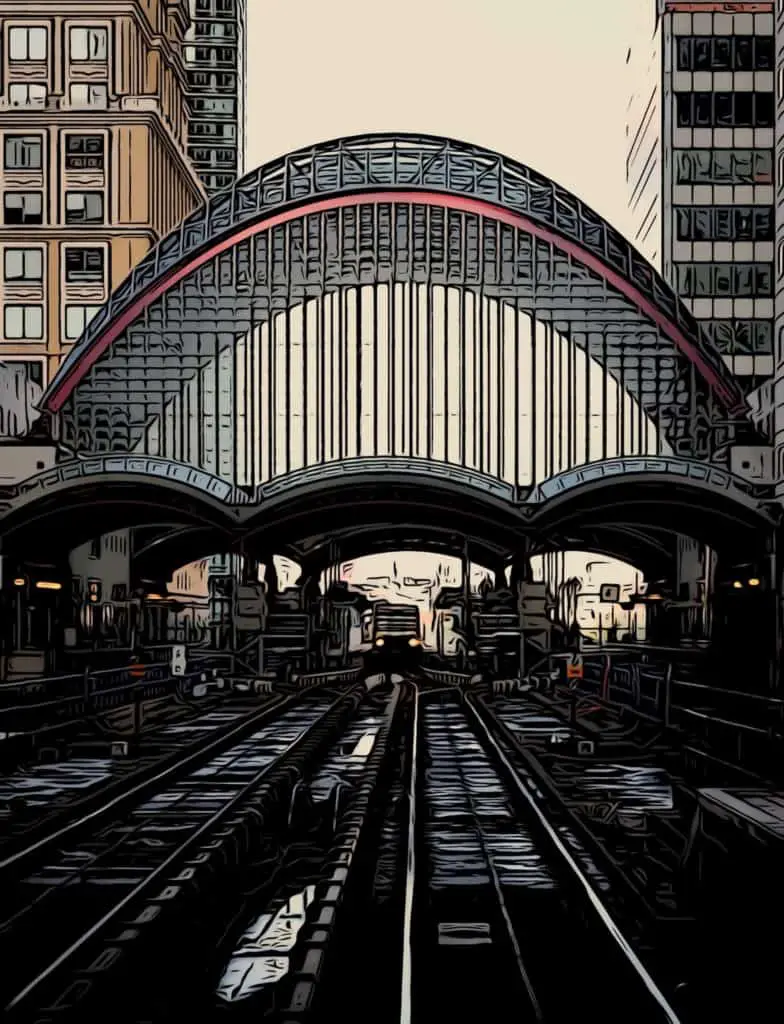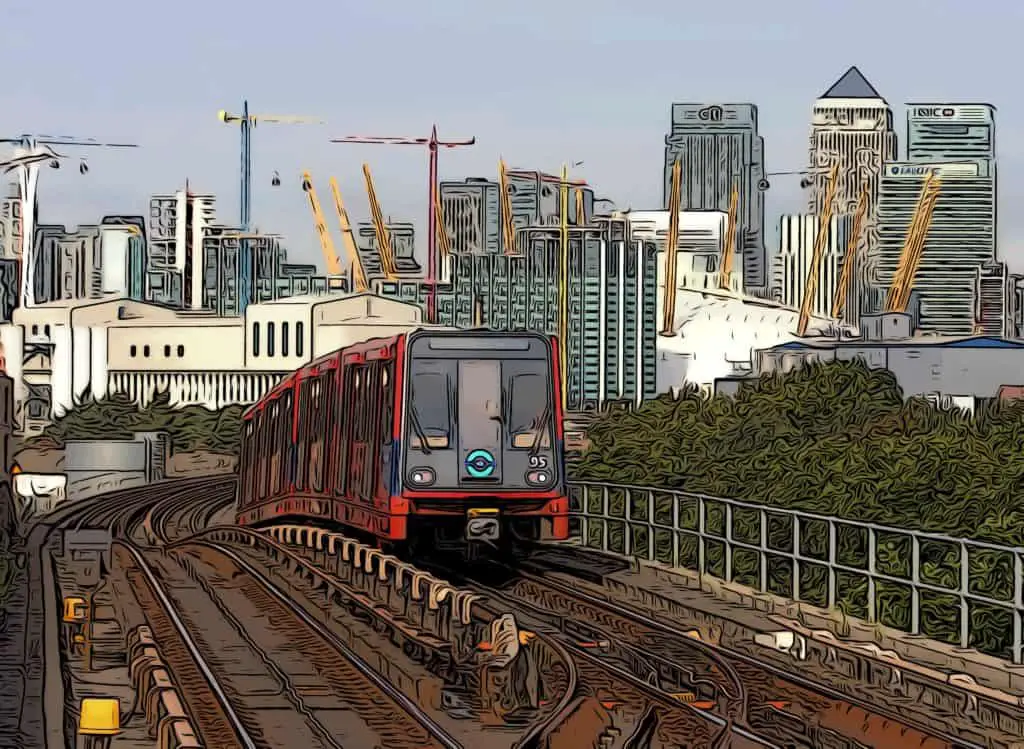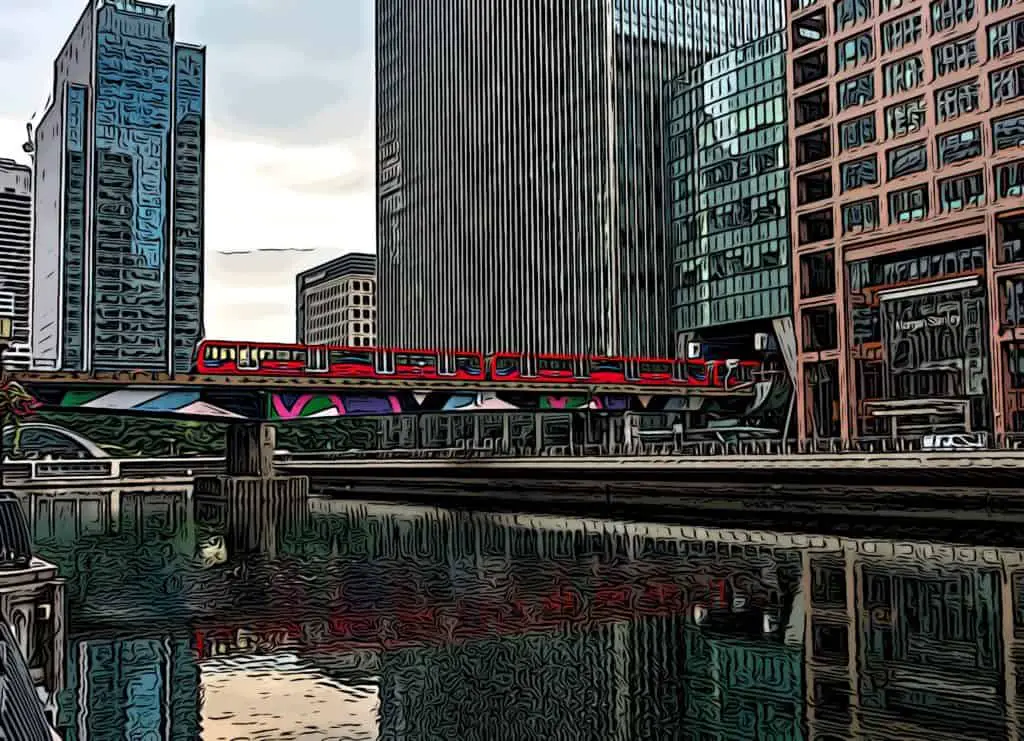Physical Address
304 North Cardinal St.
Dorchester Center, MA 02124

Navigating Canary Wharf’s DLR
London’s biggest DLR station
Canary Wharf’s DLR station is a 6 track monster — the biggest on the DLR network.
It has also come a long way since its opening in 1991. The DLR network has had multiple extensions and expansions — now serving 45 stations with triple-length automated trains.
Passenger numbers have skyrocketed, having grown from just under 40 million passengers per year in 2000 to around 120 million passengers a year in recent years.
As the Canary Wharf estate has expanded, so have the DLR connections. In fact, there are now three stations that provide easy access to the financial estate:
Here are some DLR facts and helpful tips to navigate the DLR stations at Canary Wharf.
| Developer | Olympia and York |
| Architect | GEC-Mowlem Railway Group |
| Construction cost | £9m |
| Number of tracks | 6 |
| Originally opened | 1991 |
| Tube Zone | 2 |
| Address / Postcode | 14 South Colonnade, London, E14 4PZ |
Canary Wharf is not only well connected — its transport connections are London’s favourite!
Both TFL lines that connect Canary Wharf — the Jubilee line tube and the DLR line — were jointly voted London’s favourite train lines in 2017.
At the time of construction in 1987 the DLR was the first driverless train system in the UK and was considered very futuristic.
However, with a designated cost for the entire network of £77 million, the rest of the stations opted for cheap, repeatable bus station style coverings.
Instead at Canary Wharf, the architects chose a domed glass roof — said to be in tribute to Victorian era train stations.

With three TFL stations in Canary Wharf connections can be more complicated than they need to be. For interchanges between the DLR, Jubilee line and shortly Crossrail — here are three tips to keep you on track!
There is a little publicised caveat in the TFL guidelines that show something called OSI’s — out of station interchanges.
In other words, that means that there are a few stations on the London transport network that when you swipe out, and change to a different mode of transport — if you do it quickly enough — it won’t charge you and counts as one journey.
There are two at Canary Wharf:
With Elizabeth line trains set to connect through Canary Wharf’s Crossrail Place in 2022 — and the station already open for the popular roof gardens and several restaurants — it will only continue to get busier.
You might be surprised to know that West India Quay could be a better option for connecting to Crossrail.
West India Quay DLR and Canary Wharf DLR stations are both actually equidistant from Crossrail place — at around 0.2miles or a 250 meter walk for either.
If you are connecting to the Elizabeth line from the north it will always be quicker to exit at West India Quay, then go one stop past.
While you’ll get to walk across the fancy Crossrail Place Bridge if you connect from Canary What DLR station — you’ll probably also get significant crowds. Ditch crowds and the bridge and transfer via West India Quay instead.
Yep, In another quirk of the TFL system Heron’s Quay DLR station is closer — and much easier — to access the Canary Wharf’s tube station than Canary Wharf DLR is.

Heron’s Quay DLR drops you off at the southwest side of Reuters Plaza — with the Jubilee line stations main entrance 200 meters across the plaza directly in front of you.
However, if its a rainy windswept day — and in Canary Wharf it frequently is! — you might want to avoid the rain and take a slightly longer walk. Canary Wharf DLR provides covered access all the way to the Jubilee line via the underground shopping centres.